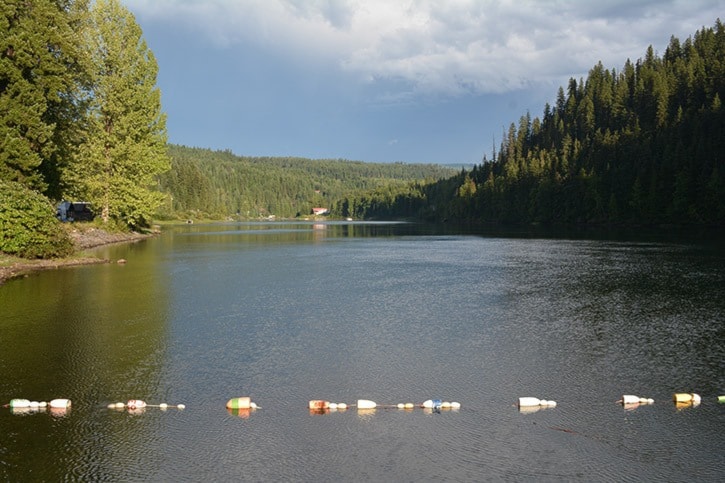Concerns that sewage held in the Mount Polley tailing storage facility would have been part of the Aug. 4 breach have led to several inquiries from residents who get their water from Quesnel Lake.
“Some people had some E. coli analysis done and had some questions at the community open house last week about what are safe levels for E. coli,” Rob Britles, environmental health specialist with Interior Health, told the Tribune Monday. “The message we’ve been giving is if you’ve got an intake from surface water anywhere in B.C. you should be disinfecting your water.”
Through a permit with the Ministry of Environment, the mine is authorized to discharge sewage into a septic tank and then to the tailings storage facility and has been doing so for years.
In a statement, the company said it is confident the results of one or two MPN per 100 ml are consistent with readings back as far as 2010.
“The bottom line is that we are confident that elevated e-coli readings are not coming from the tailings breach, which is the reason that we discontinued sampling for that,” Imperial Metals vice-president of corporate affairs Steve Robertson told the Tribune Saturday. He also said the company is not in a position to make a recommendation about drinking the water as it relates to E. coli counts and strongly recommended residents discuss the matter with Interior Health.
“The sewage volume was small in comparison to the tailings volume,” he added.
On Monday, Mount Polley Mining Corporation responded to numerous inquiries about sewage disposal at the mine site and the potential for bacterial contamination by posting a FAQ sheet on its website.
Britles said E. coli is an indicator measure associated with fecal matter from warm blooded mammals and birds. It is used because it’s quite simple and easy to test for.
Water is tested for E. coli and total coliforms for two reasons which are to ensure drinking water treatment is working and for recreational water guidelines such as at beaches where people are swimming.
Robertson confirmed the company continues to monitor water quality in Quesnel Lake for substances related to the breach, such as turbidity and metals.
Meanwhile, Highlands Irrigation Ltd.’s owner manager Dick Ford said his company has been installing filtration units for residents, a move that came after MPMC agreed to cover the costs.
The filter goes in the water system after the pump and before the utilities of the home. It’s pretty straight forward, he explained.
“We installed 10 so far, have one significant order in and will have another one following and of course we’re installing them as fast as we can get through the work.”
The Ministry of Environment did not respond to the Tribune’s request for information about permits for sewage in tailings storage facilities by press time.
